Our philosophy is, if you can’t bring anything new to a given industry, there is no reason to get into that industry.
ASTG could have gone to market over a year ago, but our research and development team wanted to bring consistency, integrity and security to the card grading industry. Our team was able to design and implement several innovative securities features the card grading industry has desperately needed for more than 20 years.
The highly defined dual grading standards ASTG developed are mathematical-based and are not subject to the graders’ opinion. The use of mathematical grading standards is the only way ASTG graders, and the grades assigned to cards can be consistent. ASTG also utilizes two graders to evaluate each card submission before a final grade is given. All graders follow where applicable all current ASTM/ISO/TAPPI Testing Standards and Practices.
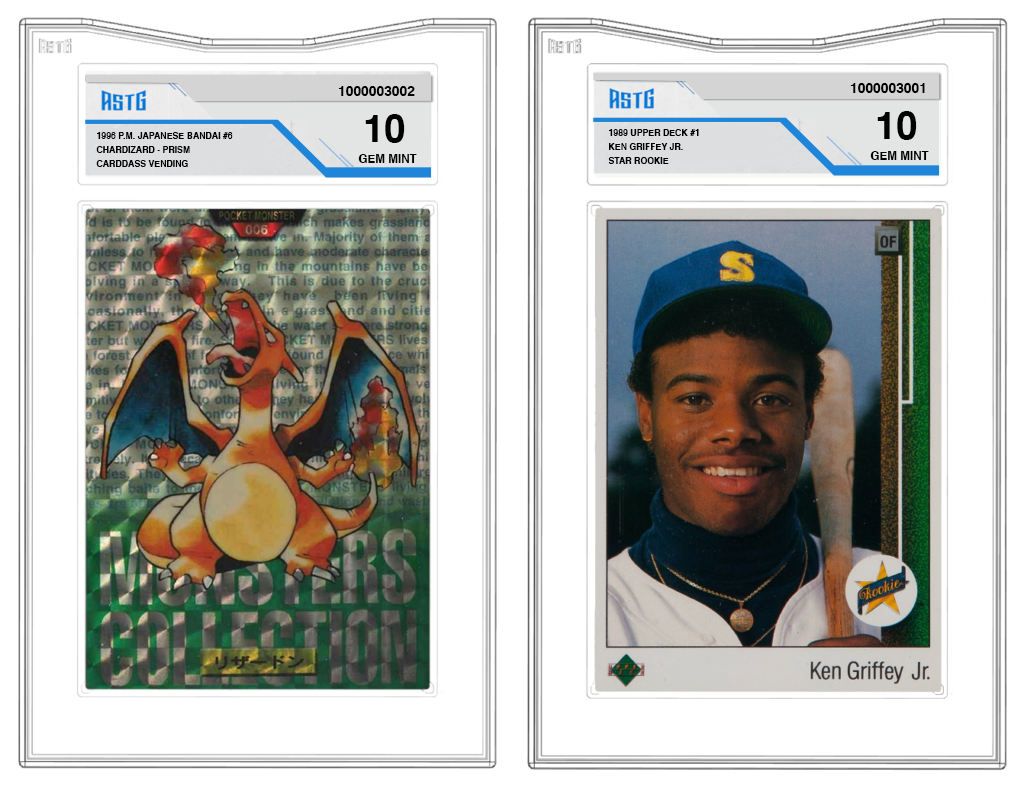
Here is a look at our concept case design that is in a patent pending process.
ASTG uses two different grading standards for modern and vintage trading cards to ensure that both are judged in the correct context of their eras.
ASTG designed two card grading standards, one for modern and one for vintage. The reason for the two grading standards is the differences in how the cards were made during each era. Modern cards have higher quality standards compared to their vintage counterparts. Using the same grading standards for each era is like using the same grading standard to evaluate and grade an apple and an orange… it does not make sense and does not work.
The highly defined dual grading standards ASTG developed are mathematical based and are not subject to the graders’ opinion. The use of mathematical grading standards is the only way ASTG graders and the grades assigned to cards can be consistent. ASTG also utilizes two graders to evaluate each card submission before a final grade is given. All graders follow where applicable all current ASTM/ISO/TAPPI Testing Standards and Practices.
02
We designed our Card Grade, Population and Pricing (CGPP) report with the security of our customers in mind. With our detailed grader’s findings for every card, pictures of the front and back of your card once they have been graded and encapsulated in our holder we feel this a good starting point to help determine if your card is legitimate or a possible forgery.
One of the biggest concerns in the card grading industry is the lack of security that has allowed for rampant fraud dating back to the late 1990s. The following are examples of fraud currently occurring in the card grading industry:
ASTG designed four distinctly unique and aesthetically pleasing slab configurations to accommodate all standard size card layouts and thicknesses (20pt. to 360pt). All slab configurations have a built-in stand which folds out so you can display your valuable collectible effortlessly (cards are meant to be displayed not stacked and stowed away). When the slabs are not being displayed the stands fold in and become part of the slab (industry first).
A tamper-evident/resistant two-label system which contains the card’s identification information and ASTG’s unique certification number as well as the card’s condition numeral grade based off of ASTG’s mathematical grading scale. If for any reason the DUOCERT label system is removed from the EMBLAZ slab, there is a counter security measure in place. The unique certification number notated on the DUOCERT label is also marked on the inside of the EMBLAZ slab. This marking is invisible and only visible with a UV light source. This allows the buyer to quickly and accurately assess if they purchased an authentic ASTG graded card or counterfeit.
A two-stage invisible process developed by ASTG which allows buyers and collectors to quickly assess if they have purchased an authentic ASTG graded card or a counterfeit. This allows for a two-way security match. If these two areas differ then the slab has been tampered with or is counterfeit.
ASTG designed HARBOURSHIELD inserts to keep the card and DUOCERT labels stationary and secure providing maximum protection so they do not get damaged inside the EMBLAZ series slabs. The HARBOURSHIELD inserts are molded with ultra clear resin which has been infused with a unique color signature that changes to an ASTG proprietary color when exposed to UV light. This unique color signature cannot be duplicated.
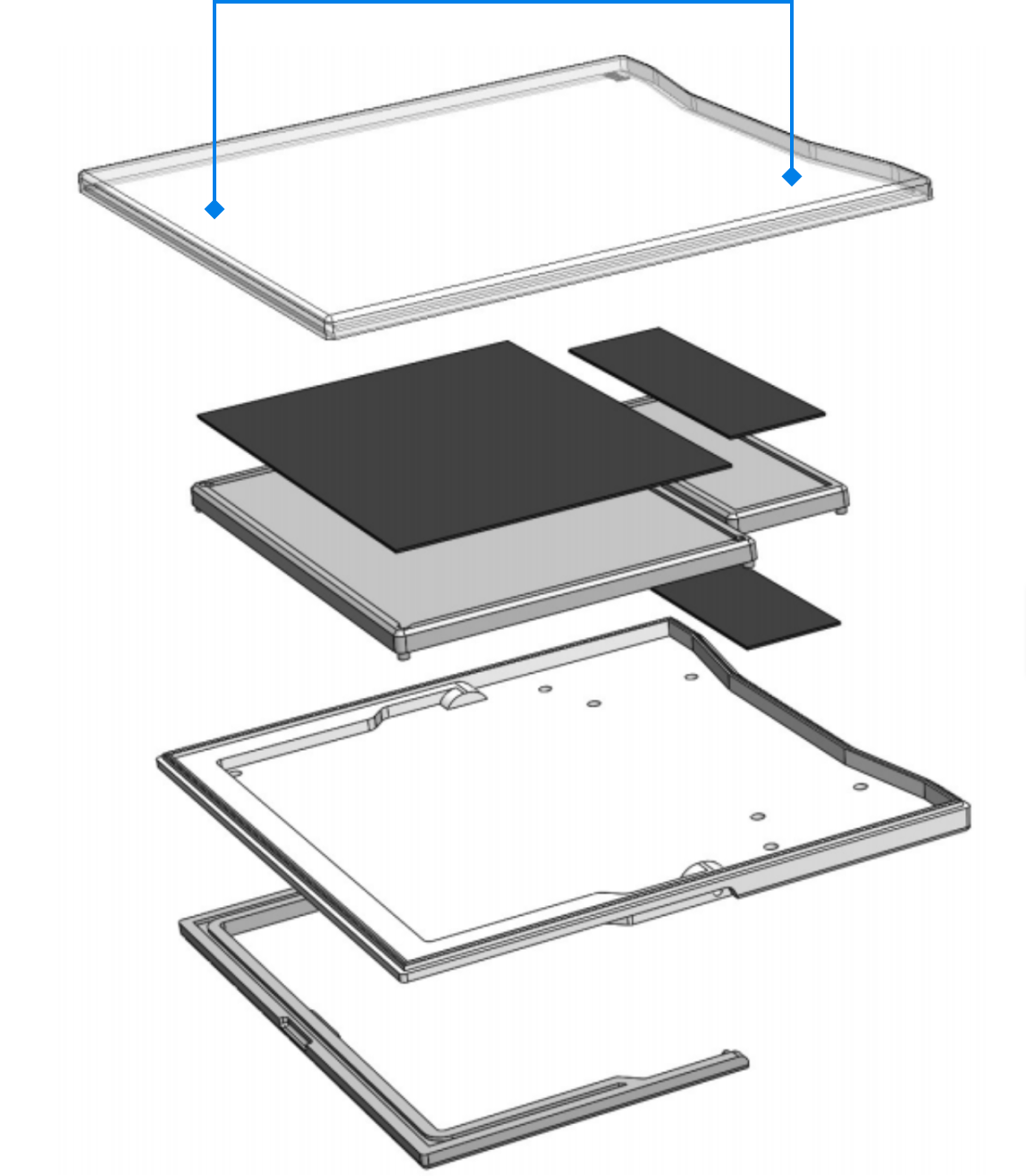
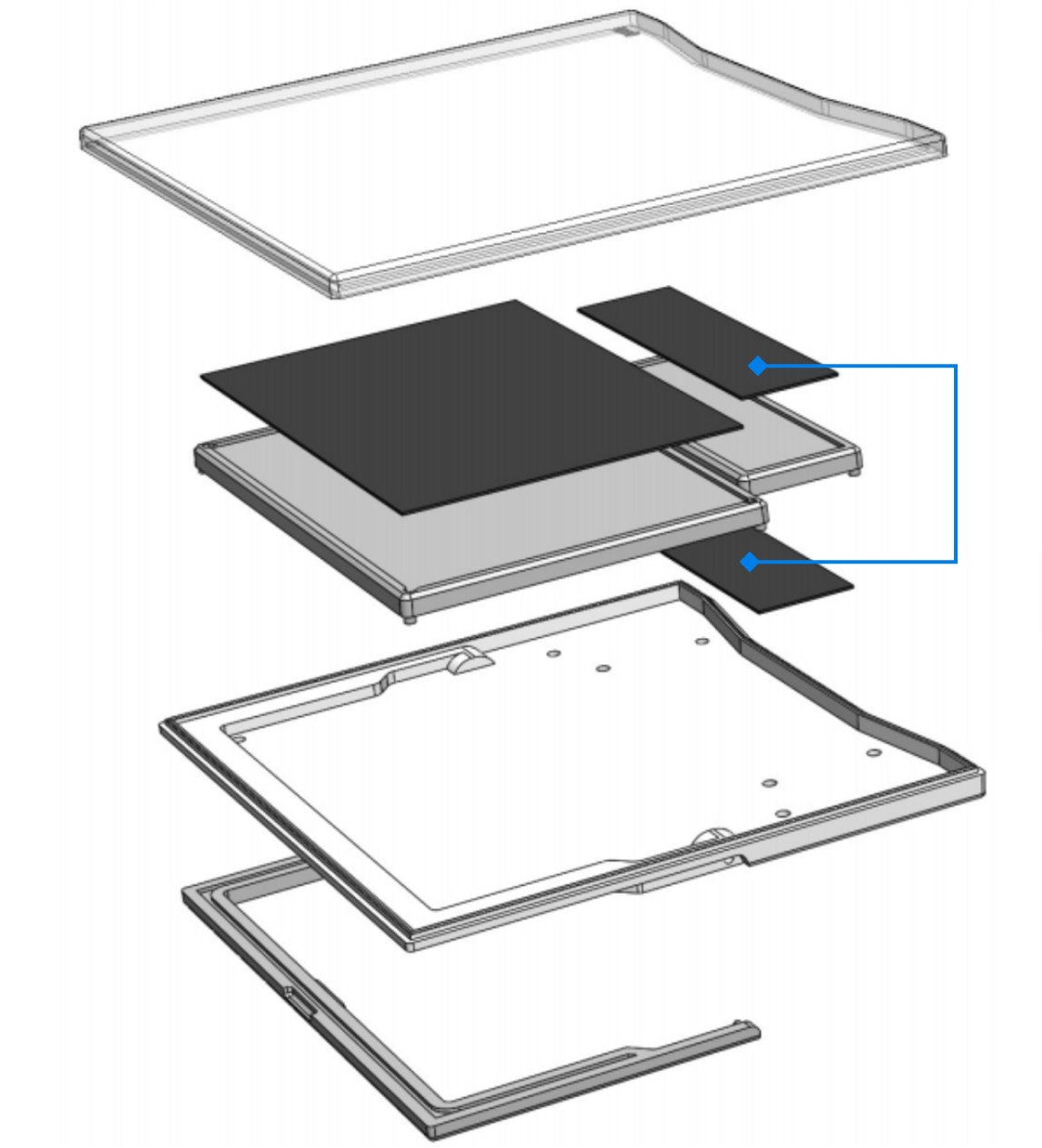
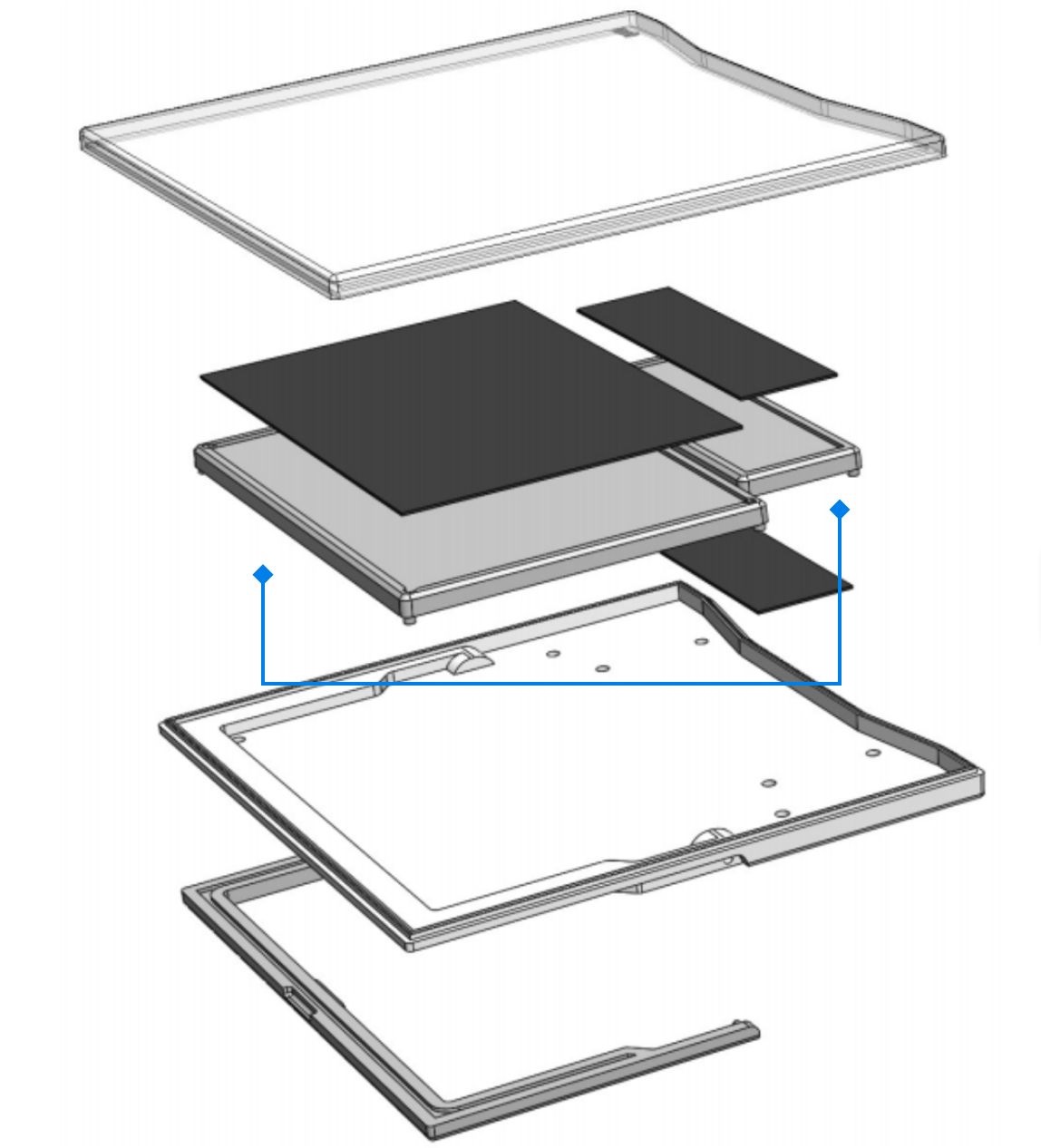
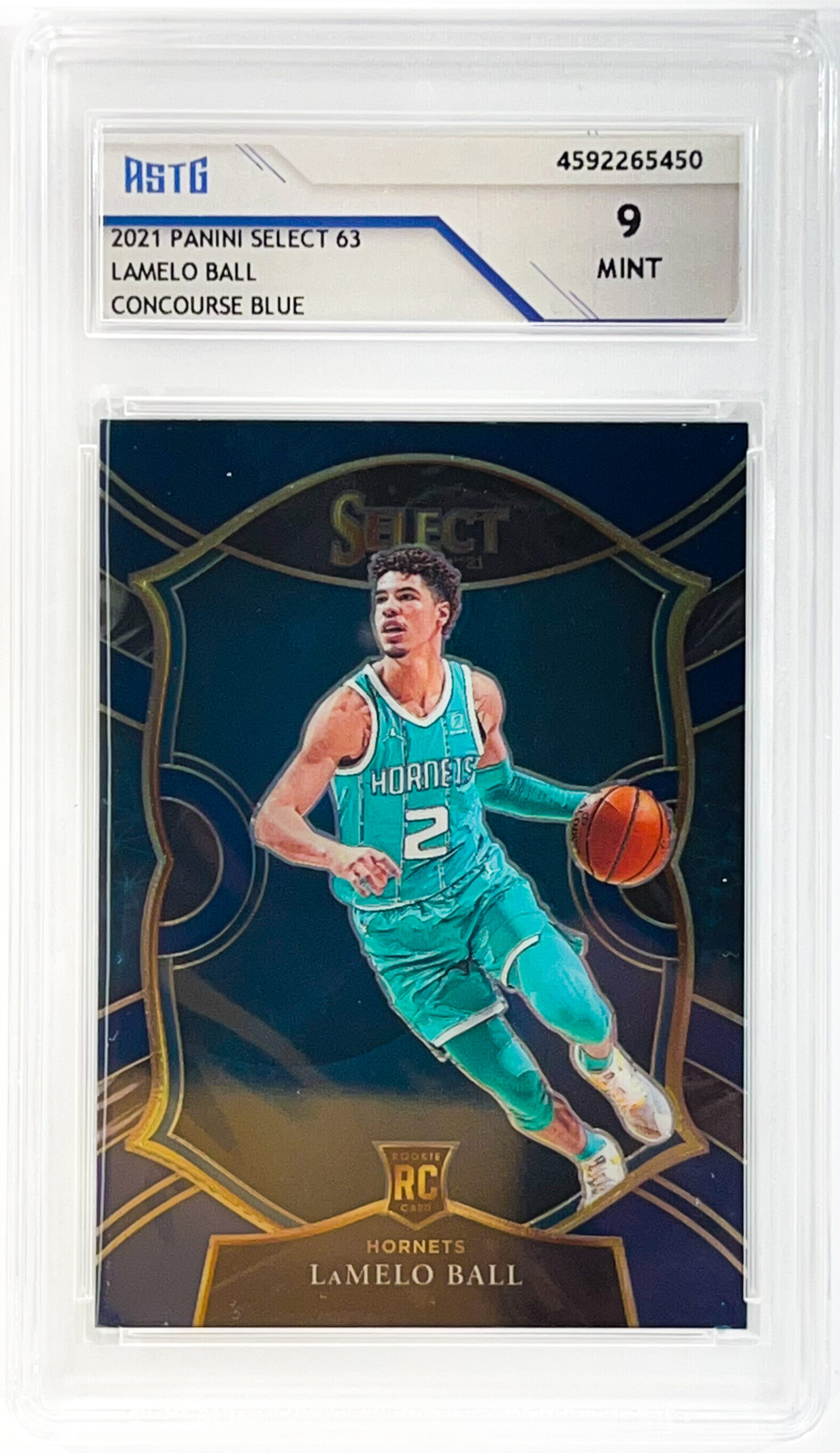
03
We believe you as the customer should know EXACTLY why your card received the grade that it did.
ASTG’s patent pending technology ensures an accurate, consistent and professional grade no matter the card or the cards value.
This portion of the CGPP Report is used by ASTG graders to document issues, if any, found during the evaluation of a card. Here are a few examples of issues the graders might find during the card evaluation:
The grader measures the centering of a card and finds it to be:
Centering Front L/R 62/38
Centering Front T/B 71/29
Centering Back L/R 52/48
Centering Back T/B 78/22
These precise measurements are documented in the report so there is no guessing what the actual centering is.
Upon further review the grader notices one of the cards’ corners has a small chip measuring 1/64”. The grader will document in the report that the card has a small chip measuring 1/64” and will provide a grid location so there is no guessing the size and location of the chip.
ASTG does not use sub-grades like our competitors. For example, if a card has 8.5 centering and 9 corners what does that even mean? Another grader could say the same card has 7 centering and 9.5 corners. There is no factual data provided to warrant such conditions and is 100% the graders’ opinion. With ASTG’s mathematical grading scale the graders provide precise mathematical calculations. When a corner chip measures 1/64” there is no disputing, it is a fact. When the grader measures every aspect of the cards condition it is a mathematical fact not the graders’ opinion therefore there is no need for sub-grades.
These of course are just a few examples, the graders are also looking at the corners surface, edge, and for any printing issues.
This portion of the CGPP Report the two graders complete their evaluation of a card then compare their fact finding reports. If the two reports differ in anyway a third review is conducted to make sure neither grader missed something during their card evaluation. In a perfect world each grader would catch every issue, but let’s face it, missing something can happen, we have all done it at some point. Once there is a 100% consensus a final grade is assigned based on the mathematical findings. This final grade is then documented in the CGPP Report and is viewable by simply scanning the QR code on the back of the label or by typing in the card’s certification number on our pop report page.
This portion of the CGPP Report is a running tally of the total number of a particular card ASTG has had the opportunity to grade. These totals are separated by the level of the grades given. This population total is documented in the CGPP Report and is viewable by simply scanning the QR code on the back of the label.
COMING SOON!!!
This portion of the CGPP Report provides the current market value for a particular grade level of a card. ASTG’s software tracks all sales transactions on several marketplace platforms, pulls in sales values, averages the sold price, then posts average sales prices for each grade level of the card. This process is performed twice daily and provides consumers with live current pricing and is viewable by simply scanning the QR code on the back of the label.